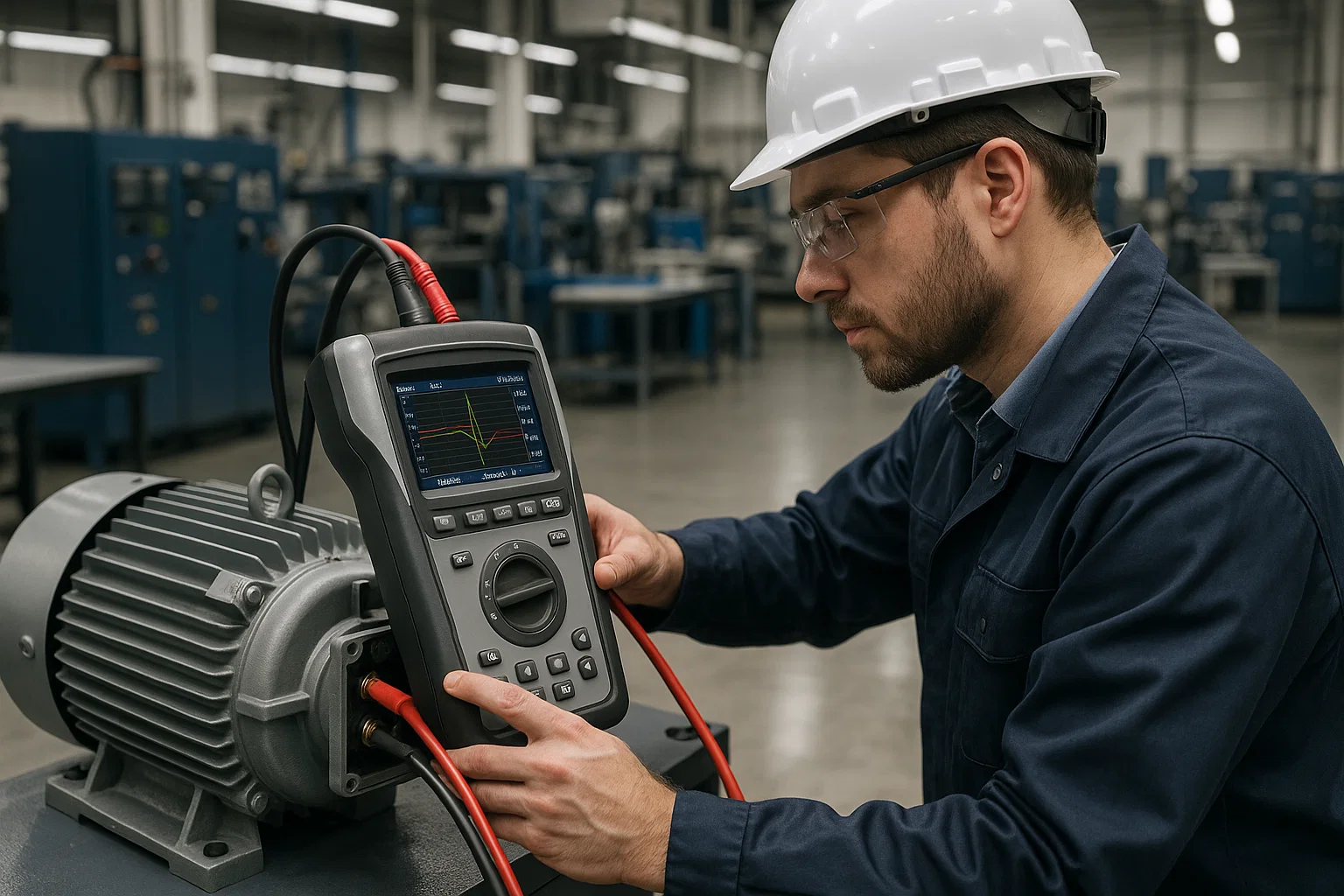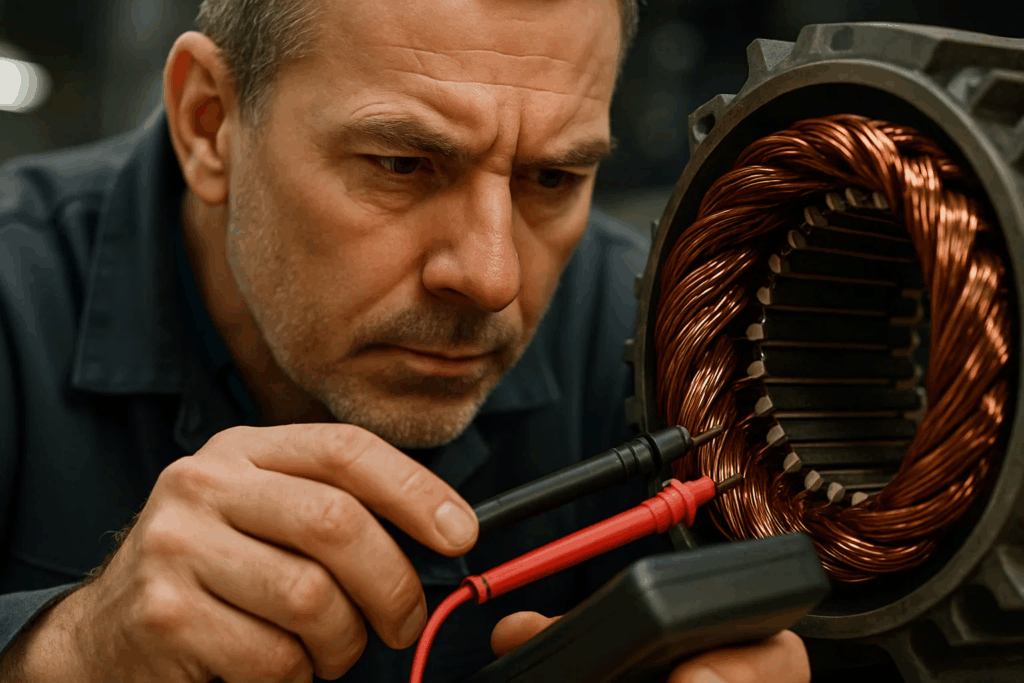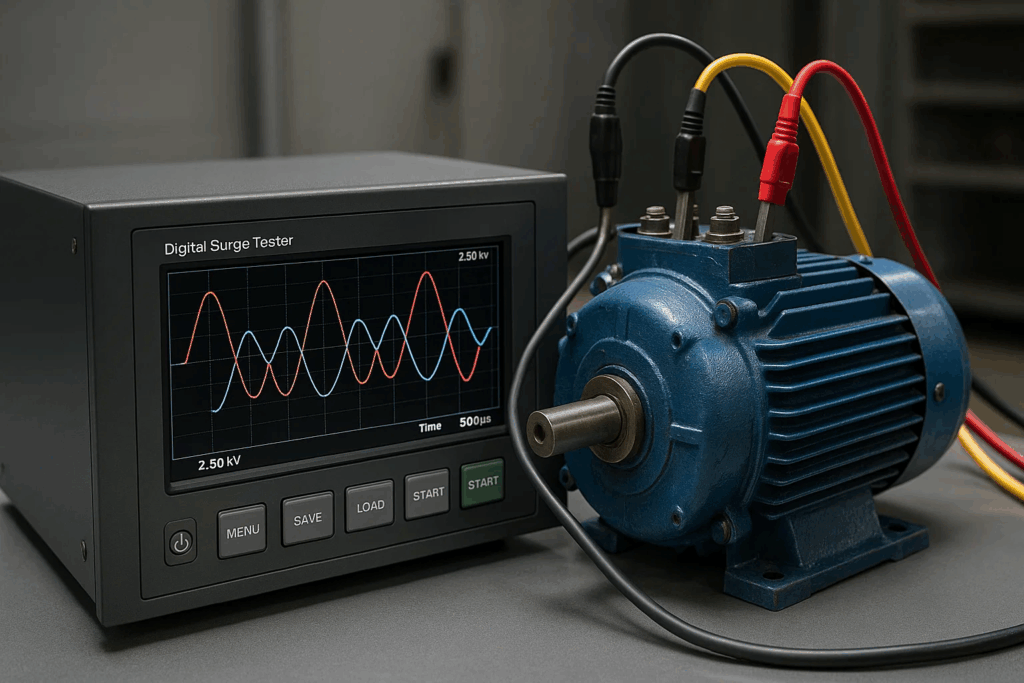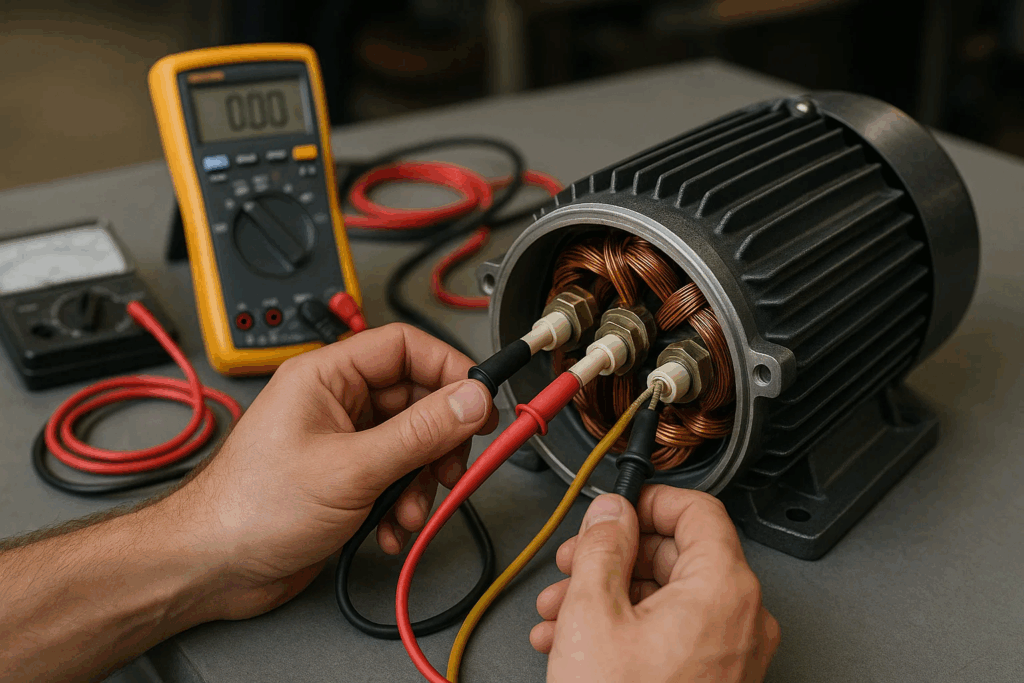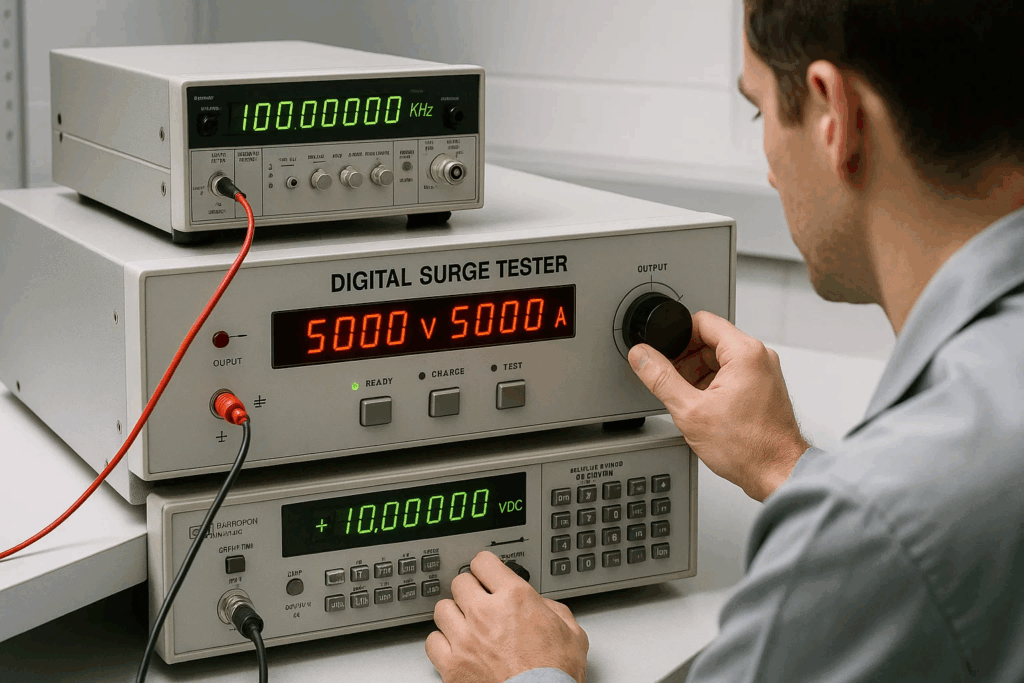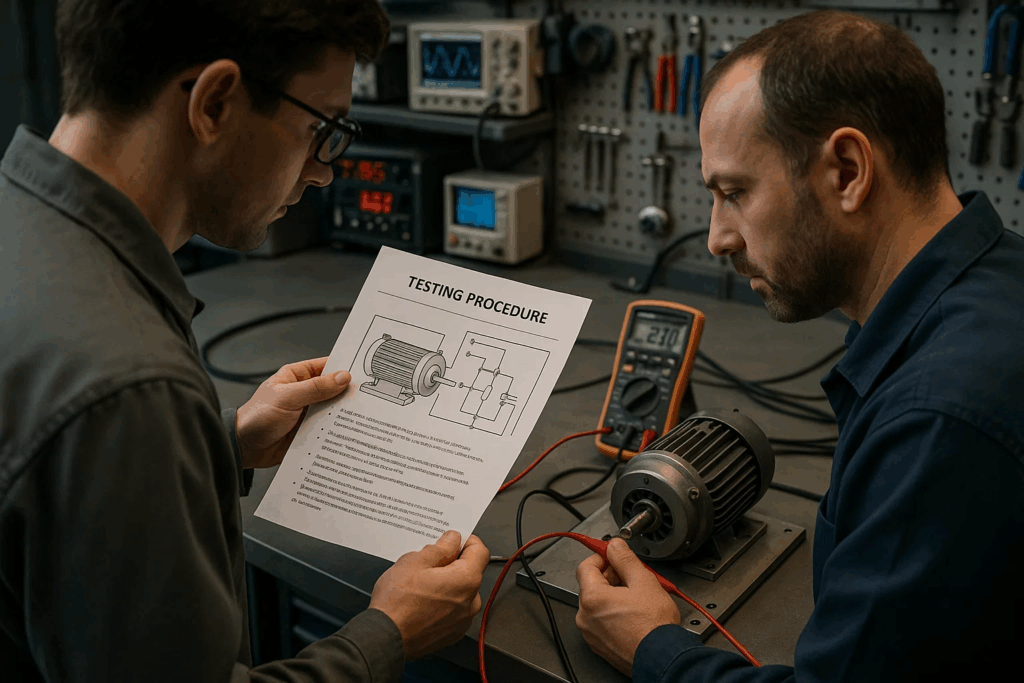Introduction
Testing electrical equipment is a critical process that ensures safety, reliability, and performance. However, even experienced engineers and technicians can encounter errors that compromise test results and lead to incorrect diagnoses. These testing errors not only waste valuable time and resources but can also result in equipment failure, production delays, and safety hazards.
In industrial settings where motors, transformers, and other electrical components are essential for operations, accurate testing is non-negotiable. Understanding common electrical testing errors—and knowing how to avoid them—is a vital skill for maintenance professionals and electrical engineers alike.
This comprehensive guide explores the most frequent testing mistakes, their potential consequences, and proven solutions to ensure your electrical testing procedures deliver accurate, reliable results every time.
Understanding the Importance of Accurate Electrical Testing
Electrical testing serves as the first line of defense against equipment failure and workplace hazards. When testing procedures are compromised by errors, the consequences can be severe:
- Safety Risks: Faulty equipment that passes testing due to errors can lead to electrical fires, shocks, and other safety incidents.
- Costly Downtime: Unexpected equipment failures cause production delays that impact the bottom line.
- Premature Equipment Failure: Undetected insulation weaknesses or winding issues can shorten the lifespan of expensive motors and transformers.
- Wasted Resources: Replacing components that aren’t actually faulty due to false test results wastes both time and money.
According to maintenance professionals, up to 30% of electrical equipment failures could be prevented with proper testing protocols. This makes troubleshooting testing errors not just a technical necessity but a business imperative.
Common Surge Tester Errors and Solutions
Surge testers are invaluable tools for evaluating the insulation system of motors, generators, and transformers. Understanding what a surge tester is and its capabilities is essential before troubleshooting. However, several common errors can compromise test results:
1. Improper Voltage Selection
Problem: Using incorrect test voltage can either fail to detect insulation weaknesses (too low) or damage good insulation (too high).
Solution: Follow manufacturer guidelines for test voltage selection based on the rated voltage of the equipment. As a general rule, surge test voltage should be approximately 2-3 times the equipment’s rated voltage plus 1000V.
2. Inadequate Lead Connections
Problem: Poor connections between the tester and the equipment create resistance that distorts waveforms and produces misleading results.
Solution:
- Ensure all connection points are clean and free of oxidation
- Use appropriate lead types and sizes for the equipment being tested
- Verify secure connections before beginning the test
- Consider using specialized fixtures for repetitive testing of similar components
3. Environmental Interference
Problem: Electromagnetic interference from nearby equipment can affect surge test readings.
Solution:
- Conduct testing in a controlled environment away from operating machinery
- Use proper grounding techniques to minimize noise
- Shield test leads when necessary
- For persistent interference issues, consider troubleshooting your surge tester with manufacturer support
- Implement proper surge protection devices in your testing environment
Problem: Surge test results are displayed as waveforms that require interpretation. Inexperienced operators may miss subtle indicators of insulation problems.
Solution:
- Invest in proper training for all testing personnel
- Establish a library of reference waveforms for various equipment types
- Use automated analysis features when available on digital surge testers
- Conduct regular comparison testing to establish baseline readings for critical equipment
- Learn about surge tester applications to better understand result patterns
5. Skipping Preliminary Tests
Problem: Bypassing basic tests before conducting surge testing can lead to equipment damage and misleading results.
Solution:
- Always perform insulation resistance tests before surge testing
- Conduct basic winding resistance measurements to detect obvious faults
- For armature testing, follow proper armature testing procedures
- Implement test sequence checklists for technicians
- Use high voltage testing principles to establish a safe testing progression
Winding Test Mistakes to Avoid
Motor and transformer winding tests are essential for detecting issues before they lead to equipment failure. For comprehensive testing, it’s important to understand how to test motor windings properly. Here are common mistakes and their solutions:
1. Confusing Test Types
Problem: Many technicians confuse the purposes and procedures of megger tests and surge tests, leading to incomplete testing.
Solution:
- Remember that megger tests primarily detect ground insulation issues, while surge tests identify turn-to-turn insulation problems
- Use both test types for comprehensive winding assessment
- Document clear procedures for each test type to prevent confusion
- Invest in combination testers that can perform multiple test types with proper guidance
2. Improper Phase Isolation
Problem: Failure to properly isolate phases during winding testing can mask problems or create false indications of issues.
Solution:
- Ensure complete disconnection of phases not being tested
- Verify isolation with preliminary continuity checks
- Follow a systematic testing procedure for each phase
- Document connection diagrams for complex equipment to ensure proper testing configuration
- For single-phase motors, follow specific single-phase winding test procedures
3. Overlooking Temperature Effects
Problem: Winding resistance varies significantly with temperature, affecting test results.
Solution:
- Allow equipment to reach a stable temperature before testing
- Record ambient and equipment temperatures
- Apply appropriate temperature correction factors
- Compare readings to previous tests conducted at similar temperatures
4. Improper Test Sequencing
Problem: Testing in the wrong order can affect results or create safety hazards.
Solution:
- Always perform insulation resistance tests before high-voltage tests
- Follow a consistent sequence: visual inspection → insulation resistance → surge test → other specialized tests
- Document the testing sequence for each equipment type
- Create checklists to ensure no steps are missed
Learn more about proper winding test procedures for three-phase motors to avoid common errors.
Induction Heating Testing Challenges
Induction heating equipment presents unique testing challenges. Understanding electromagnetic induction principles is crucial for proper testing. Here are common errors and solutions:
1. Coil Positioning Errors
Problem: Improper positioning of work pieces relative to the induction coil leads to uneven heating and inaccurate test results.
Solution:
- Use fixturing to ensure consistent positioning
- Document optimal positioning for various work piece geometries
- Implement visual alignment guides for operators
- Consider automated positioning systems for critical applications
- Review proper induction heating coil design principles
2. Power Setting Mistakes
Problem: Using incorrect power settings during testing can result in insufficient heating or overheating that damages the equipment or work piece.
Solution:
- Develop and document specific power profiles for different materials and geometries
- Use temperature monitoring to validate heating results
- Implement programmable controllers to ensure consistent power application
- Train operators on the relationship between power settings and heating outcomes
3. Cooling System Issues
Problem: Inadequate cooling during induction heating testing can damage equipment and produce inconsistent results.
Solution:
- Verify cooling system operation before each testing session
- Monitor coolant temperature, pressure, and flow rates
- Establish minimum cooling parameters for different testing scenarios
- Implement automatic shutdowns if cooling parameters fall outside acceptable ranges
- For large applications, understand induction heating for large rotors cooling requirements
4. Material Variation Effects
Problem: Variations in material properties affect induction heating characteristics, leading to inconsistent test results.
Solution:
- Categorize test materials by key properties (conductivity, permeability, etc.)
- Develop testing parameters specific to each material category
- Use reference samples to validate testing setups
- Consider material-specific calibration for critical applications
- Research optimal materials for induction hardening for your application
Understanding the working principles of induction heaters and induction hardening processes can help technicians avoid many common testing errors.
Equipment Calibration and Maintenance Issues
Testing equipment itself requires proper care to deliver accurate results. Common calibration and maintenance errors include:
1. Neglecting Regular Calibration
Problem: Testing equipment that drifts out of calibration provides increasingly inaccurate results over time.
Solution:
- Establish and follow a calibration schedule based on equipment usage and manufacturer recommendations
- Use calibration services with traceable standards
- Maintain detailed calibration records
- Verify calibration status before critical testing
2. Improper Storage Conditions
Problem: Test equipment exposed to extreme temperatures, humidity, or dust can develop issues that affect accuracy.
Solution:
- Store testing equipment in controlled environments
- Use protective cases during transport
- Allow equipment to acclimate before use in different environments
- Implement regular cleaning procedures for connectors and interfaces
3. Battery and Power Supply Problems
Problem: Low batteries or unstable power supplies can cause erratic behavior in test equipment.
Solution:
- Check battery condition before starting tests
- Use regulated power supplies when operating from line power
- Keep spare batteries available for field testing
- Consider uninterruptible power supplies for critical testing applications
4. Skipping Self-Tests and Diagnostics
Problem: Many modern test instruments have built-in diagnostics that users often bypass, missing early warning signs of equipment problems.
Solution:
- Run self-tests at the beginning of each testing session
- Document and investigate any unusual behaviors or messages
- Follow up on warning indicators even if the equipment appears to function
- Use manufacturer’s diagnostic procedures on a regular schedule
Best Practices for Error-Free Electrical Testing
Implementing these best practices can significantly reduce testing errors:
1. Comprehensive Testing Procedures
Develop detailed, step-by-step testing procedures for each equipment type and test scenario. These procedures should include:
- Equipment preparation requirements
- Safety precautions
- Connection diagrams
- Test parameter settings
- Expected results and tolerances
- Troubleshooting guidance for abnormal results
2. Proper Training and Certification
Ensure all testing personnel have appropriate training:
- Invest in formal training programs for electrical testing
- Implement competency verification for new technicians
- Conduct regular refresher training for experienced staff
- Consider certification programs like NETA or manufacturer-specific training
- Study the benefits of using surge testers to understand their value
3. Quality Testing Environment
Create optimal conditions for accurate testing:
- Designate specific areas for electrical testing when possible
- Control temperature and humidity in testing areas
- Minimize electromagnetic interference
- Ensure adequate lighting for visual inspections
- Provide proper work surfaces and fixturing
- Understand how to choose the right surge tester for your environment
4. Reference Standards Development
Establish internal standards for comparison:
- Create a library of “known good” test results for common equipment
- Document acceptable ranges for various test parameters
- Develop visual references for common waveforms and indicators
- Update standards as equipment ages or is modified
5. Documentation and Trending
Maintain comprehensive records to identify developing issues:
- Record all test results in a searchable database
- Implement trend analysis to detect gradual degradation
- Document environmental conditions during testing
- Include photographs or screenshots of test setups and results
Advanced Troubleshooting Techniques
For persistent or complex testing issues, consider these advanced approaches:
1. Root Cause Analysis
When encountering recurring test errors, implement formal root cause analysis:
- Use techniques like 5-Why analysis or fishbone diagrams
- Consider all potential factors: equipment, procedures, environment, personnel
- Document findings and implement preventive measures
- Verify effectiveness of solutions through follow-up testing
2. Statistical Process Control
Apply statistical methods to testing programs:
- Establish control limits for critical test parameters
- Monitor for trends and special causes of variation
- Calculate process capability for testing procedures
- Use statistical tools to distinguish between actual issues and normal variation
3. Peer Review and Validation
Implement verification processes for critical testing:
- Require independent verification of test setups for critical equipment
- Conduct blind duplicate testing to verify reproducibility
- Establish technical review processes for unusual or borderline results
- Use team-based approaches for complex testing scenarios
4. Advanced Diagnostic Integration
Combine multiple testing technologies for comprehensive analysis:
- Correlate electrical test results with vibration analysis
- Integrate thermal imaging with load testing
- Use motor current signature analysis alongside surge testing
- Implement continuous monitoring for critical systems
Conclusion
Electrical testing errors can compromise safety, reliability, and efficiency in industrial operations. By understanding common mistakes and implementing targeted solutions, maintenance professionals can significantly improve testing accuracy and equipment reliability.
The key to successful electrical testing lies in a combination of proper equipment, well-trained personnel, comprehensive procedures, and attention to detail. By addressing the common errors outlined in this guide, organizations can develop robust testing programs that detect potential issues before they become costly failures.
Remember that electrical testing is not just a technical requirement but a critical business process that protects valuable assets and ensures operational continuity. Investing in error-free testing practices delivers returns through extended equipment life, reduced downtime, and enhanced workplace safety.
For more information on electrical testing best practices or to explore advanced testing equipment options, contact our support team or browse our comprehensive resources on surge testing and induction heating. Understanding how surge testing enhances motor reliability can help justify the investment in proper testing equipment and procedures.
This guide was prepared by the technical experts at Vivid Metrawatt Global, a leading provider of electrical testing equipment and solutions for industries worldwide. Our commitment to testing excellence drives our continuous research into best practices and innovative technologies for electrical maintenance and reliability.

